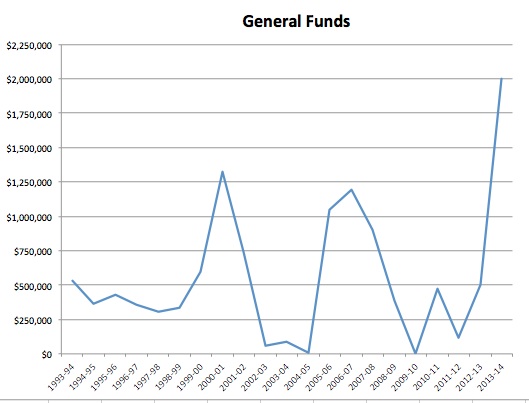The VMRC is preparing to embark on the largest state-funded oyster replenishment initiative in state history, thanks to a record $2 million appropriated in the budget by Governor Robert F. McDonnell and the Virginia General Assembly.
April 4, 2013 — The following was released by the Virginia Marine Resources Commission:
NEWPORT NEWS, Virginia — The Virginia Marine Resources Commission is preparing to embark on the largest state-funded oyster replenishment initiative in state history, thanks to a record $2 million appropriated in the budget by Governor Robert F. McDonnell and the Virginia General Assembly.
"This historic investment will provide significant ecological and economic benefits, and will provide consumers with more delicious, high-quality Virginia oysters," said Doug Domenech, Secretary of Natural Resources. "This is a win for the health of the Bay, for oyster-lovers and for our hard-pressed watermen in these difficult economic times."
The replenishment program will begin in May and last through August, and will focus on public oyster grounds in the James, York, and Rappahannock Rivers, and in the Chesapeake Bay in Pocomoke and Tangier Sounds.
Restoration using shucking house shells will begin first, and will be staged from Omega Protein's Reedville plant. The company has agreed to again allow its property to be used to store the empty oyster shells and equipment necessary for the operation. Finding a centralize access point has been difficult in past years, and is critical to the success of this major initiative.
"We are happy to help support this important effort,'' said Ben Landry, spokesman for Omega Protein, the largest commercial fishing operation in Virginia. "Public service is a significant component to what we do and this clearly is a very worthwhile public project."
Oyster replenishment involves the spreading of empty oyster shells on state-owned public oyster grounds to provide habitat so naturally occurring oyster larvae can attach to the shells during spawning and grow to form new adult oysters that will reach market size in roughly three years.
The program provides significant ecological and economic benefits. A single adult oyster can purge up to 50 gallons of water a day. Oyster reefs provide important forage and refuge habitat for invertebrates, as well as juvenile crabs and finfish species.
Every $1 spent by the state to plant oyster shells yields $7 in economic benefits in the form of larger harvests and increased jobs for oyster shuckers and oyster packing houses.
An anticipated 1 million bushels of shells will be deployed on public oyster grounds. That's roughly 1 billion individual empty oyster shells, enough to fill approximately 4,000 dump trucks.
"The majority of these shells will go into our rotational oyster harvest areas, meaning they will be untouched for several years as they grow to adulthood and spawn a new generation of oysters before they can be harvested," said Virginia Marine Resources Commissioner Jack Travelstead. "It is important they be harvested at that point because otherwise they are susceptible to the two diseases, Dermo and MSX, which kill adult oysters. We don't want to see them wasted to disease."
In addition to empty shells from oyster shucking houses, the initiative will also use shells dredged from fossil oyster shell deposits in the James River near Jamestown.
General Fund appropriations for oyster replenishment funding have ranged from zero to as much as $1.3 million over the past two decades, and have never surpassed the $2 million allocated to the program in the 2014 state budget. The appropriation was proposed by Governor McDonnell and approved by the Virginia General Assembly. The budget was finalized yesterday, April 3.
"This is a remarkable, and gratifying, investment that will yield a bonanza of ecological and economic benefits," said Kim Huskey, executive director of the Virginia Seafood Council. "This will help clean the water, boost the economy, provide financial benefits to the seafood industry, and provide more world-renown Virginia oysters for our consumers."
Over the past decade, the oyster harvest in Virginia has increased ten-fold, from 23,000 bushels in 2001 to an estimated 250,000 bushels in 2012. In that time, the dockside value of the oyster harvest increased from $575,000 to more than $8.26 million. In fact, last year's oyster harvest in Virginia was the largest since 1989.
The ripple effects through the economy from last year's harvest resulted in roughly $22 million in economic value, using a multiplier of 2.63 on a dockside value of more than $8.26 million, a formula established by the late Dr. James Kirkley, a well-respected Virginia Institute of Marine Science seafood industry economist.

